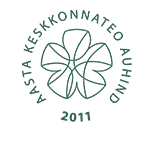|
The report of the floristic analyses 2012
The studies of the vegetation of the deposit areas are showing the continious decrease of the mean number of the vascular plants. Due to small size of the sediment banks – compared to the whole territory of flood plain – the vegetation processes taking place there have only local significance. There is absolutely no danger of strange and invasive species possibly attacking the flooded meadows. Although we found from these mounds several species not growing in the surrounding area, the 2nd year results already show that vegetation typical to flooded meadows is quickly conquering the ground. In some time the vegetation typical to flooded meadows would undoubtedly restore there. However, somewhat higher topography may favour species less tolerant to flooding, but in case of herbaceous plants, the competition between the plants still has larger impact on the species composition than floods. The most real hazard is covering with willow shrubs, and if not mowed, this is very likely. We should also mention here that a mound of 0.5 m high is no obstacle for the equipment used for mowing.
WILDLIFE ESTONIA
NGO Wildlife Estonia is established in 2000. Our aim is to protect rivers and other aquatic habitats. We care about the nature, biodiversity and fish in particular.
HABITATS
Springs, rivers and lakes are our common treasure. The more natural status they have the more precious they are.
COMPETENCE
Successful application and implementation of river restoration and fish population status improvement projects. Scientific ichthyology studies with traditional and modern bio-telemetric methods.
Disclaimer on LIFE projects.
LIFE projects are co-financed by the European Union LIFE program. Views and opinions expressed are however those of the author(s) only and do not necessarily reflect those of the European Union. The European Union can not be held responsible for them.
CONTACTS
Eesti Loodushoiu Keskus, registration 80124928,
Address: Veski 4, 51005 Tartu, ESTONIA
Send e-mail:
Contact phone (+372) 51 76886




